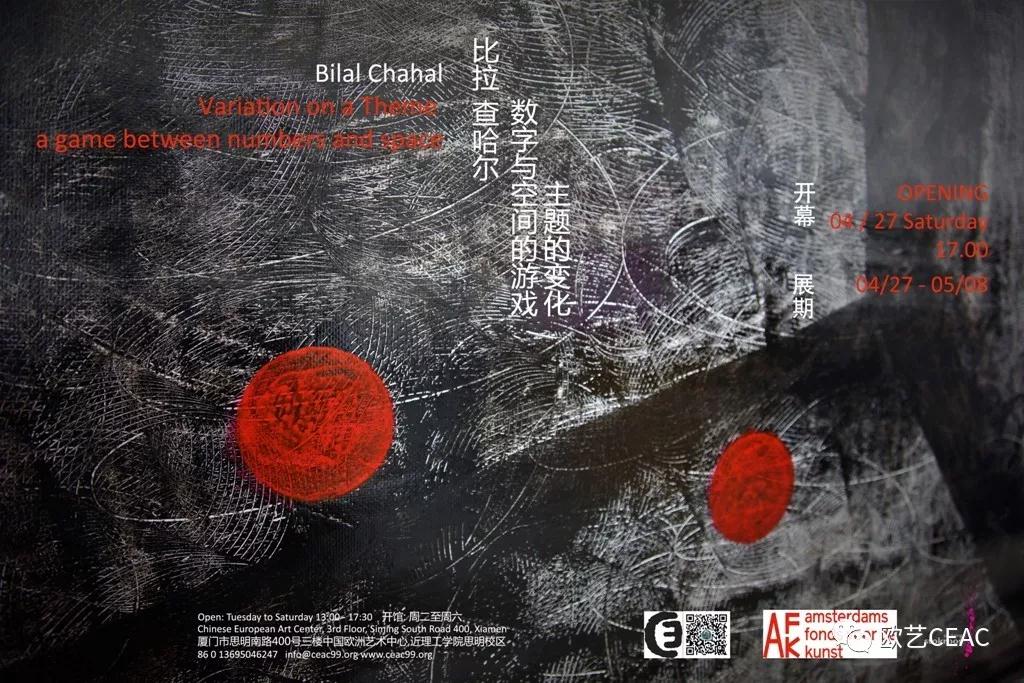Opening
April 27 at 17:00, 2019
Duration
04/27 till 05/08, 2019
Location
CEAC (Xiamen, China)
Artist
 My interest is to get closer to Chinese culture by exploring the Abacus and play with different motives, colors and styles. I try to bring eastern and western cultures together, understand numbers and merge them in our own space, our daily life. We are always counting we are always evaluating our future past and present according to our experiences and we make calculation to predict and make our decisions. Numbers have a great value and the eastern Chinese method of counting the first or the base of a digital computer. Western world should not forget this amazing instrument Abacus that has been used for 100 of years. What can we learn from that and how can we enrich ourselves with other cultures and especially not to forget our own.
My interest is to get closer to Chinese culture by exploring the Abacus and play with different motives, colors and styles. I try to bring eastern and western cultures together, understand numbers and merge them in our own space, our daily life. We are always counting we are always evaluating our future past and present according to our experiences and we make calculation to predict and make our decisions. Numbers have a great value and the eastern Chinese method of counting the first or the base of a digital computer. Western world should not forget this amazing instrument Abacus that has been used for 100 of years. What can we learn from that and how can we enrich ourselves with other cultures and especially not to forget our own.
— Bilal Chahal
In Lebanon he grew up until his tenth, moved to Curacao due to the civil war in Lebanon, on Curacao he finished primary school and received his first lessons in painting in 1990.
Chahal refers to this as an important stage in his life. He took lessons from Luigi Pinedo, from 1990 till 1994 who taught him everything about oil painting. At the same time Chahal found his way to Raed Selman, under whose influence he started more free painting and learned acrylic techniques. This is followed by studying with Ria Houwen., Hortence Brown, Tieneke van der Geest and Brandt. This is when he develops his own signature.
In 1999 he moved to Amsterdam, The Netherlands, where he studied at the University of Amsterdam till 2009. ArtHistory was his major study but he also was interested in philosophy, psychology and law and there, at the UVA, he followed various minors in those subjects.
Since this period, color and materials became an important character in Chahal’s work. He makes abstract work that ranges from seemingly simple, but on closer inspection complicated accumulated monochromes, mixed medias and techniques, from bright colorful canvases in which the paint in various techniques are applied so that a nearly three-dimensional artwork is created, demonstrating that artistic and technical innovation go hand in hand.
Apart from paintings, Chahal also brings forth abstract sculptures, and photography.
Chahal was not only influenced by his teachers, but also by other painters, for example Mark Rothko , Tapies, the Dutch informal artist of the 50’s and the Zero movement. Which indeed can be seen in his own work as well. Just like Rothko, Chahal’s masters the art of omission. The subject becomes more free and the sense abstraction, more visible. The development continues, Chahal: ‘I’m not at all restricted anymore by elements as the size of the cloth or the paint or the material I’m using. I’m in the painting: that is my universe and that universe is unbounded.’



















